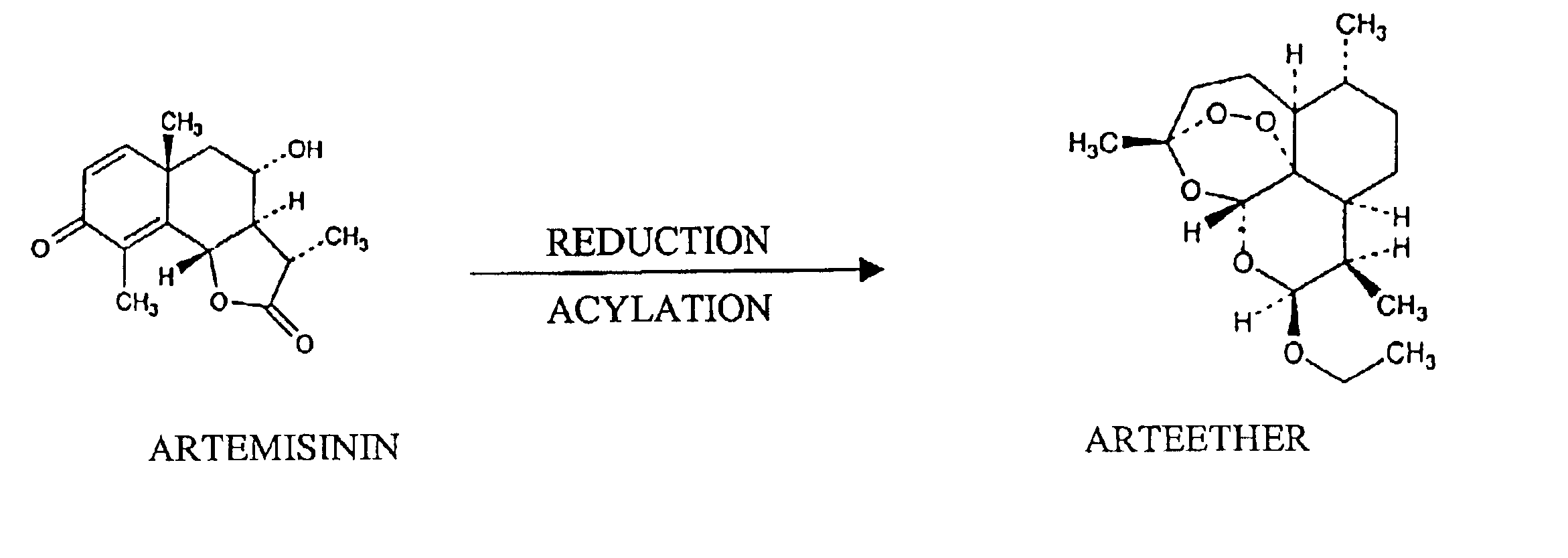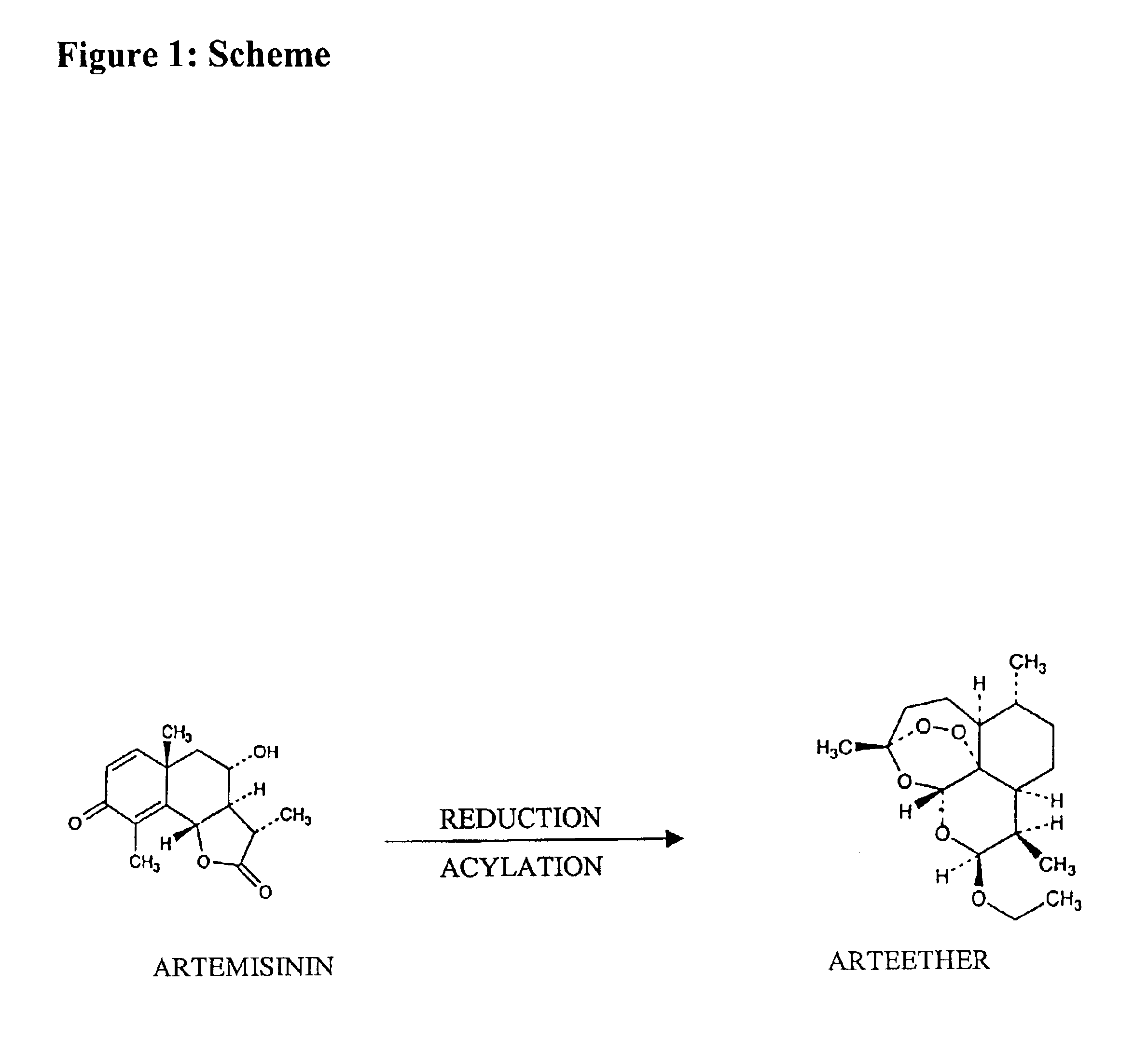Single pot conversion of artemisinin into arteether
a technology of artemisinin and arteether, which is applied in the field of single pot conversion of artemisinin into arteether, can solve the problems of difficult separation of c-11 epimer, complicated chemotherapy treatment of malaria patients, and laborious process of preparation of anhydrodihydroartemisinin, and achieves the effect of less time-consuming method
- Summary
- Abstract
- Description
- Claims
- Application Information
AI Technical Summary
Benefits of technology
Problems solved by technology
Method used
Image
Examples
example 2
Artemisinin (1 g.) and polyhydroxy catalyst, dextrose (4 g.) were stirred in ethanol (15 ml). Sodium borohydride (500 mg.) was added slowly for 10 minutes and the reaction mixture was stirred for 30 minutes at room temperature (20-23.degree. C.). After completion of the reduction step, chlorotrimethysilane (3.5 ml) was added and the reaction mixture was further stirred for 1.5 hours at room temperature. After usual work up and purification through column chromatography (1:5 ratio) a mixture of alpha and beta arteether (0.805 g., 80.5% w / w) were obtained.
example 3
Artemisinin (1 g.) and polyhydroxy catalyst, dextrose (2 g.) were stirred in ethanol (25 ml). Sodium borohydride (700 mg.) was added slowly for 10 minutes and the reaction mixture was stirred for 1.5 hours at room temperature (20-23.degree. C.). After completion of the reduction step, chlorotrimethysilane (4 ml) was added and the reaction mixture was further stirred for 2 hours at room temperature (20-23.degree. C.) to give 0.95 g. of crude arteether. After usual work up and purification through column chromatography 0.95 g. of crude arteether yielded 0.825 g. of a mixture of alpha and beta arteether (82.5% w / w).
example 4
Artemisinin (100 g.) and polyhydroxy catalyst, dextrose (500 mg.) were stirred in ethanol (10 ml) for 5 minutes. Sodium borohydride (65 mg.) was added slowly to the reaction mixture and the same was stirred for 1.25 hours at room temperature (20-23.degree. C.). After completion of the reduction step, p-toluene sulphonic acid (300 mg.) was added and the reaction mixture was completed in 4 hours at room temperature. After usual work up and purification by preparative TLC, the impure reaction product yielded 53% w / w a mixture of alpha and beta arteether.
PUM
| Property | Measurement | Unit |
|---|---|---|
| temperature | aaaaa | aaaaa |
| time | aaaaa | aaaaa |
| temperature | aaaaa | aaaaa |
Abstract
Description
Claims
Application Information
 Login to View More
Login to View More - R&D
- Intellectual Property
- Life Sciences
- Materials
- Tech Scout
- Unparalleled Data Quality
- Higher Quality Content
- 60% Fewer Hallucinations
Browse by: Latest US Patents, China's latest patents, Technical Efficacy Thesaurus, Application Domain, Technology Topic, Popular Technical Reports.
© 2025 PatSnap. All rights reserved.Legal|Privacy policy|Modern Slavery Act Transparency Statement|Sitemap|About US| Contact US: help@patsnap.com


